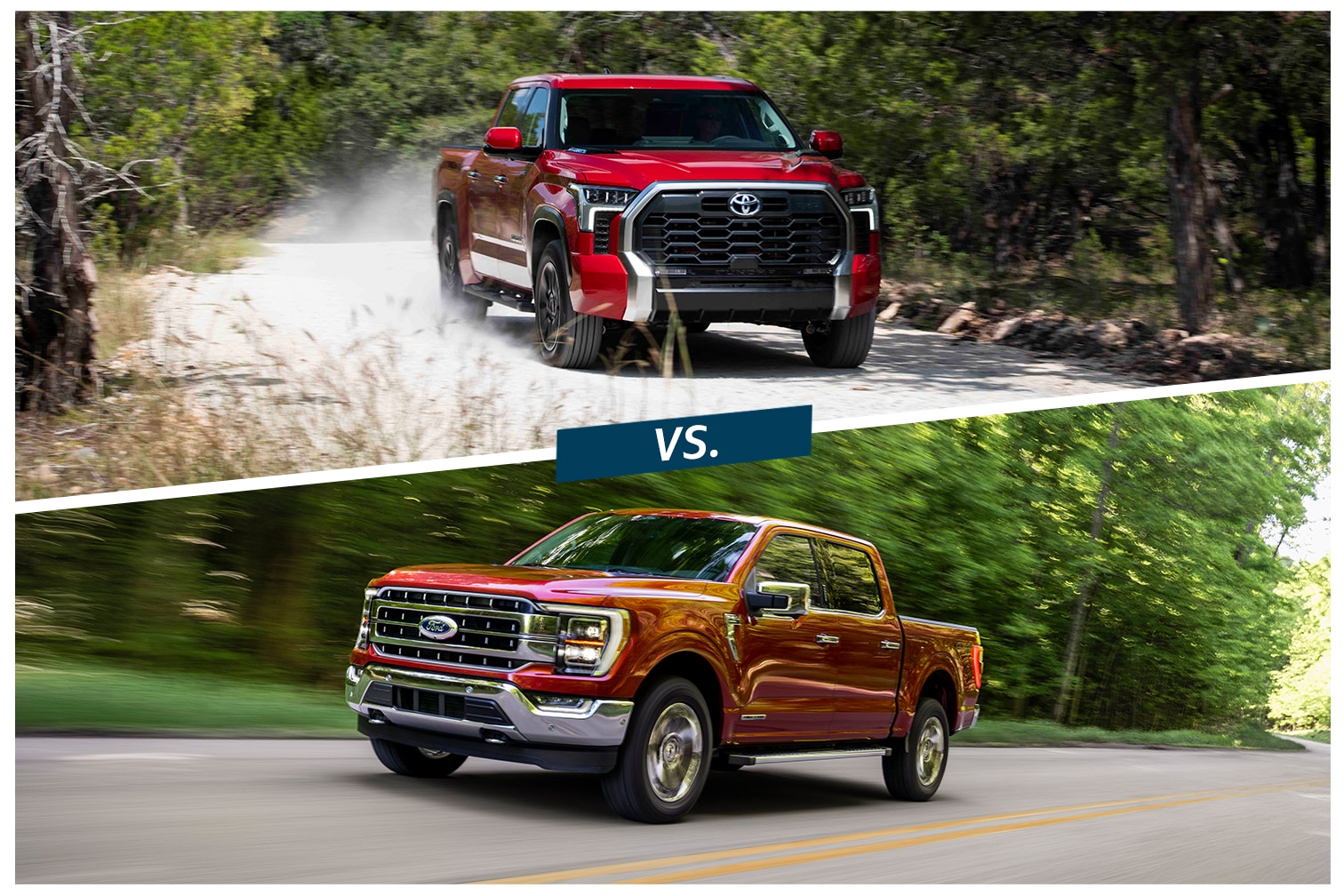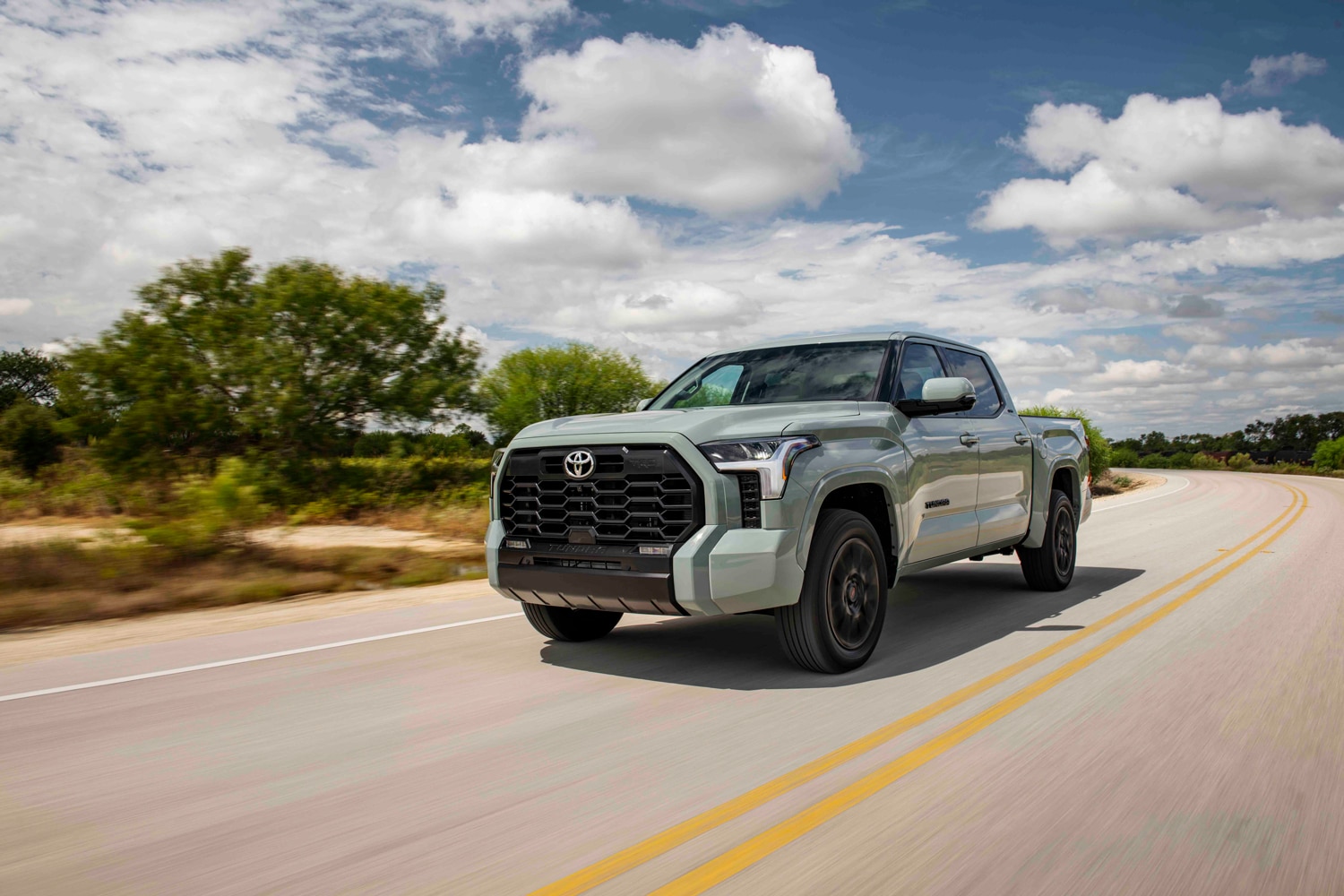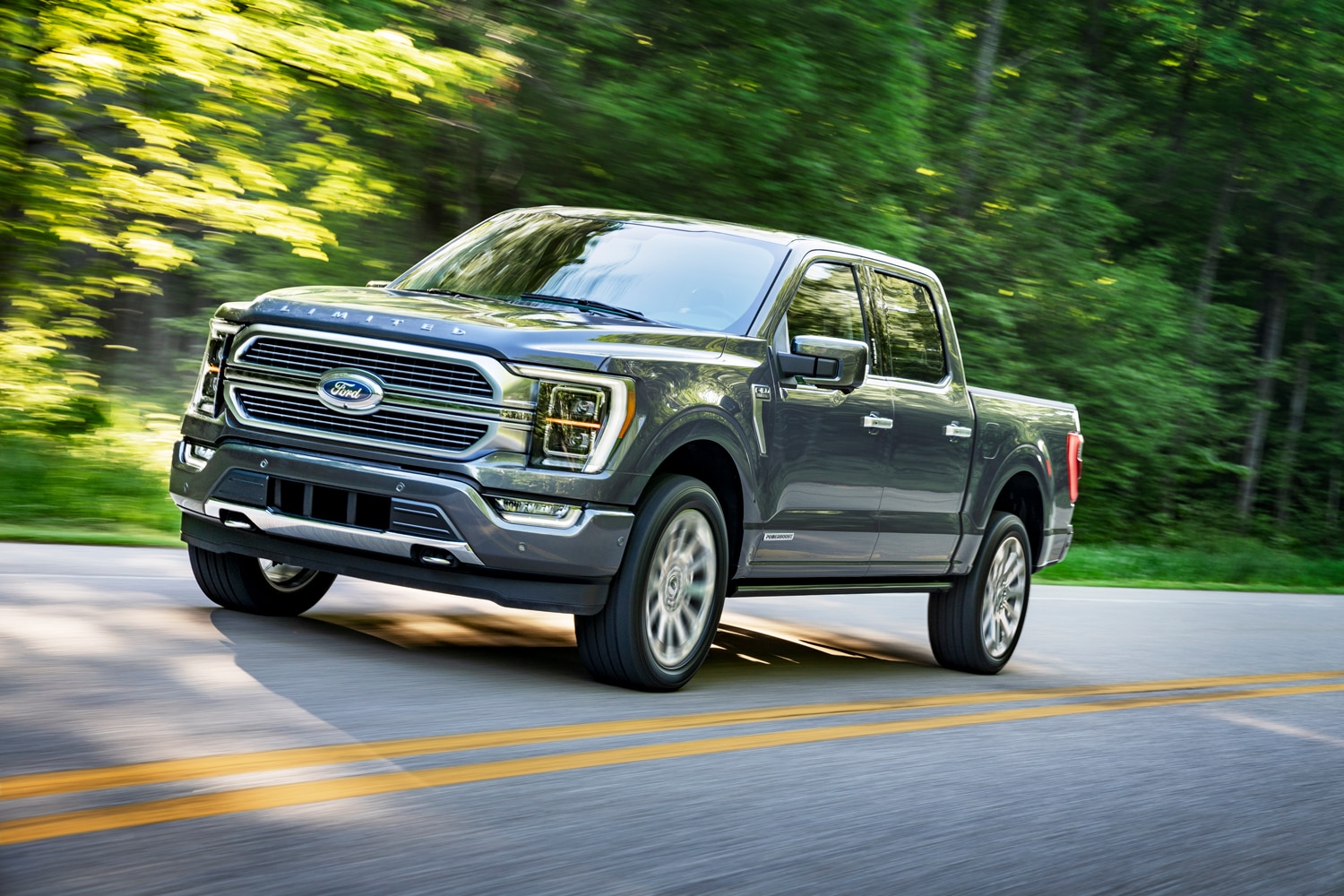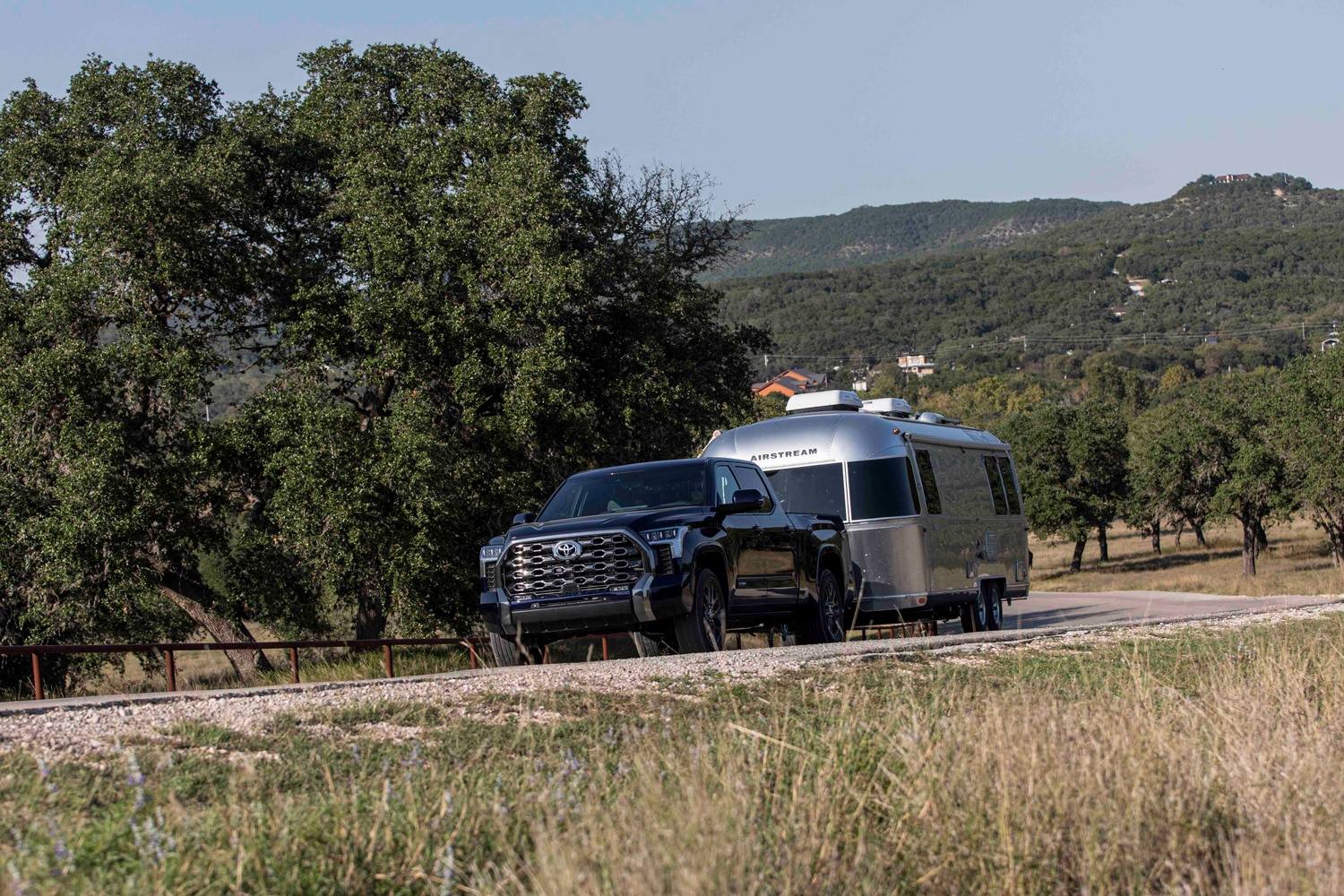Compared: 2022 Toyota Tundra vs. 2022 Ford F-150
In this match-up, it's easy to see why the F-150 is America's favorite half-ton pickup.
 Toyota/Ford
Toyota/Ford
QuickTakes:
Anyone paralyzed by choice should stay away from the full-size-truck market. Toyota tries to keep things in check, offering only a few packages on the Tundra and bundling its various features and body configurations into a reasonable number of trim levels. With the F-150, however, Ford throws everything at you but the kitchen sink. And it wouldn’t surprise us if Dearborn had one of those in the works for 2023—some kind of in-bed basin. It could happen.
 Toyota
Toyota
Toyota Tundra vs Ford F-150: Price
Toyota offers two cabin styles (double and crew) and three bed lengths (5.5, 6.5, and 8.1 feet) but not every combination of those variables: Your chosen trim level and cab style may very well determine which box size you get. The lowliest Tundra SR, with the smaller cab and a 6.5-foot bed, starts at $37,645 and features a twin-turbo V6. That engine makes 348 horsepower in this trim, but going just one step up to the SR5 model unlocks another 41 ponies, for a total of 389. Above that, starting at the Limited level, Toyota offers a 437-hp hybrid powertrain but only in crew-cab trucks. And, except where it comes standard (on the range-topping $68,500 TRD Pro and $75,225 Capstone models, for example), four-wheel drive requires another $2,575 or $3,000.

Ford, meanwhile, goes further than Toyota with its half-ton-truck offerings. The F-150 has essentially the same bed-length options as its Japanese competitor, but at the bottom of this lineup lurks a two-door regular-cab model that costs $32,290, nearly six grand less than the Tundra SR. Ford’s SuperCab model, with its two full-size and two half-size doors, is closer in size and price to the double-cab Toyota but still comes in at $36,710, about $1,000 cheaper than the Tundra.
Ford isn’t always the price leader, though. At the top of the range, the automaker charges a little more for its off-road special and luxury-packed model than Toyota does, with the awesome Raptor starting at $70,370 and the Limited at $77,530. Where it’s optional, four-wheel drive costs $3,425.
As for output, well, that depends on which of the F-150’s six available powertrains you choose. In the base truck, a 290-hp V6 comes standard, but buyers can spec a 325-hp, twin-turbo V6 or an unboosted, 400-hp V8 for extra cost. Elsewhere in the lineup, Ford offers a 250-hp turbo-diesel and a 400-hp, twin-turbo six-cylinder, plus a 430-hp hybrid powertrain based on the latter. (There’s also an EV, but the F-150 Lightning is sort of its own thing.)
 Toyota
Toyota
Toyota Tundra vs Ford F-150: Features
Ford slays in the features department. Sure, the Tundra comes standard with a scratch-resistant composite bed (the F-150 offers an optional spray-in bedliner), LED head- and taillamps, and adaptive cruise control—it even offers a few things that Ford doesn’t, such as a head-up display and an air suspension with a height-adjustable rear end that you can raise while off-roading and lower while loading.
 Ford
Ford
But the F-150 has a lot more goodies on its options list that make truck life easier. First, there’s Pro Backup Assist, which takes the guesswork out of reversing with a trailer. Then there’s Ford’s BlueCruise tech, which allows drivers to remove their hands from the wheel under certain conditions. And lastly, there’s the class-exclusive towing stuff: The Onboard Scales will measure your payload, and the Smart Hitch will tell you how well you’ve balanced the weight in your attached trailer.
 Toyota
Toyota
Toyota Tundra vs Ford F-150: Towing and Payload
Apart from the SR, which can tug 8,300 pounds regardless of body or drivetrain, every other truck in the Tundra lineup can manage at least 10,340 pounds of trailer weight. And when equipped with two-wheel drive and the 389-hp V6 (available only in the SR5), Toyota’s half-ton truck can tow up to 12,000 pounds.
To maximize payload, it’s best to pick one of the gas-only powertrains in the Tundra’s lowest three trim levels. That way, you’re guaranteed at least 1,645 pounds’ worth of hauling capacity and up to 1,940. If your heart is set on the hybrid, though, it’s still not so bad. Even the lowest-payload Tundra can accommodate 1,485 pounds in the bed.

The Ford’s tow and payload ratings span a larger range than the Toyota’s. The lowliest F-150 SuperCab can hang only 4,900 pounds off its hitch, but that’s something of an outlier. Most models can handle 7,600 pounds or more, and a rear-wheel-drive SuperCab or SuperCrew model with the 400-horse V6, max towing package, and right axle ratio will tug a best-in-class 14,000 pounds.
As for hauling capacity, the Raptor has the lowest payload rating of the bunch, at 1,410 pounds. Every other F-150 configuration can carry at least 1,705 pounds in the bed, and one model will support up to 3,325.
Written by humans.
Edited by humans.
 Beth Nichols
Beth NicholsAfter graduating from the University of Michigan, Beth Nichols stumbled into automotive journalism and found her footing, jumping between a few car magazines before going freelance. Her head, once full of useless facts about literature and art history, now holds useless facts about vehicles. She edits, checks, and occasionally creates content for Capital One, and though she understands it’s customary to write a bio in the third person, I don’t like it.
Related articles
View more related articles